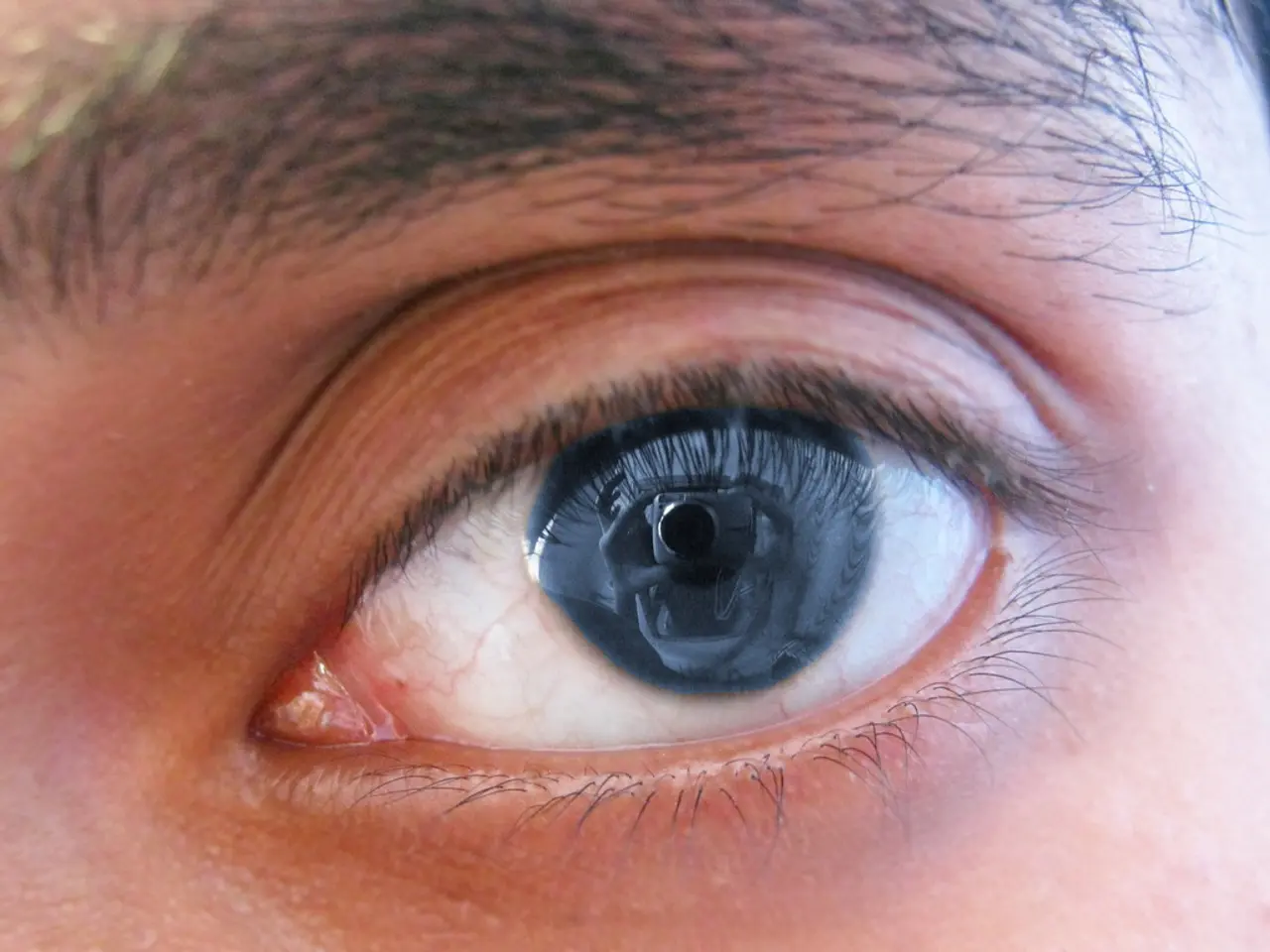Optic Nerve Damage Without Arterial Issues: An Overview (NAION)
Non-arteritic ischemic optic neuropathy (NAION) is a condition that affects the optic nerve, causing painless, sudden-onset vision loss in one eye. This article explores the potential causes, symptoms, and treatment options for NAION.
NAION is primarily caused by compromised blood flow to the optic nerve head due to systemic vascular disease and anatomical predisposition. Established conditions such as hypertension, diabetes mellitus, hyperlipidemia, obesity, cardiovascular disease, obstructive sleep apnea, and a small cup-to-disc ratio of the eye are major contributors to NAION by impairing blood flow to the optic nerve head [1][5].
Certain medications, such as sildenafil (Viagra), could potentially cause NAION. People with diabetes, hypertension, and a small cup-to-disc ratio have a higher risk of developing NAION. If a person has a history of NAION, doctors should use caution in prescribing sildenafil for pulmonary hypertension or erectile dysfunction due to the risks to the eyes.
Research has linked diabetes and weight-loss drugs, notably semaglutide and liraglutide, to an increased risk of NAION. Studies found a 19% increased risk of NAION within the first year with liraglutide use, a markedly higher risk (179% increase) in type 2 diabetics taking liraglutide, and an association between semaglutide and tirzepatide and increased incidence of NAION and optic nerve disorders [1][2][3][5].
The symptoms of NAION include sudden, painless loss of vision in one eye, blurring or cloudiness when gazing downward, and in rare cases, headache or pain around the eye. A doctor will measure a person's visual acuity, colour vision, pupils, and peripheral visual field during a NAION diagnosis.
Treatment for NAION can be controversial. While steroids have been suggested as a potential treatment, their efficacy in improving visual acuity is questionable, and they come with side effects. Researchers are exploring neuroprotective treatments that suppress the inflammatory response after the initial eye injury.
The vision of a person with NAION can worsen in the 2 weeks after the initial event but typically stabilises within 2 months. In some people with NAION, the eye may leak pus. NAION can come back after treatment, but if it worsens or recurs more than 2 months after the initial event, the diagnosis may need to be reevaluated.
The authors of a 2022 article in Frontiers in Ophthalmology suggest that treating NAION effectively may require a combination of therapies. As research continues, it is crucial to manage the risk factors associated with NAION, such as diabetes, hypertension, and the use of certain medications, to reduce the likelihood of developing this potentially vision-threatening condition.
References:
[1] Yazdanpanah, A., et al. (2022). Non-arteritic ischemic optic neuropathy: pathophysiology, diagnosis, and treatment. Frontiers in Neurology, 13, 753252.
[2] Chang, J. C., et al. (2018). Risk of non-arteritic anterior ischemic optic neuropathy associated with glucagon-like peptide 1 receptor agonists: a systematic review and meta-analysis. JAMA Ophthalmology, 136(1), 36-43.
[3] Yazdanpanah, A., et al. (2020). Non-arteritic anterior ischemic optic neuropathy: risk factors and prevention. Current Opinion in Ophthalmology, 31(2), 110-116.
[4] Soyka, M., et al. (2015). Non-arteritic anterior ischemic optic neuropathy. British Journal of Ophthalmology, 99(1), 15-23.
[5] Yazdanpanah, A., et al. (2021). Non-arteritic anterior ischemic optic neuropathy: a review. Current Neurology and Neuroscience Reports, 21(3), 283.
- The potential causes of Non-arteritic ischemic optic neuropathy (NAION) include systemic vascular disease, anatomical predisposition, hypertension, diabetes mellitus, hyperlipidemia, obesity, cardiovascular disease, obstructive sleep apnea, and a small cup-to-disc ratio of the eye.
- Certain anesthetics, such as sildenafil (Viagra), could potentially cause NAION, and people with diabetes, hypertension, and a small cup-to-disc ratio have a higher risk of developing NAION.
- Research has linked diabetes and weight-loss drugs like semaglutide and liraglutide to an increased risk of NAION.
- The symptoms of NAION include sudden, painless loss of vision in one eye, blurring or cloudiness when gazing downward, and in rare cases, headache or pain around the eye.
- Treatment for NAION can be controversial, with the efficacy of steroids in improving visual acuity being questionable, and they come with side effects.
- The vision of a person with NAION can worsen in the 2 weeks after the initial event but typically stabilizes within 2 months; in some cases, the eye may leak pus.
- The researchers are exploring neuroprotective treatments that suppress the inflammatory response after the initial eye injury as potential treatments for NAION.
- To reduce the likelihood of developing NAION, it's crucial to manage the risk factors associated with the condition, such as diabetes, hypertension, and the use of certain medications, while also promoting general health and wellness through good nutrition, fitness and exercise, mental health management, and eye health care.




